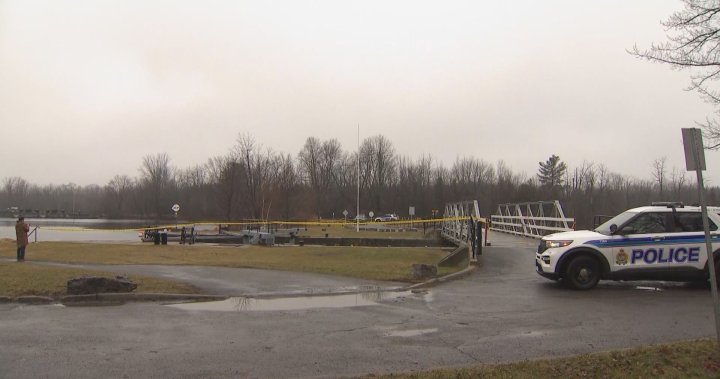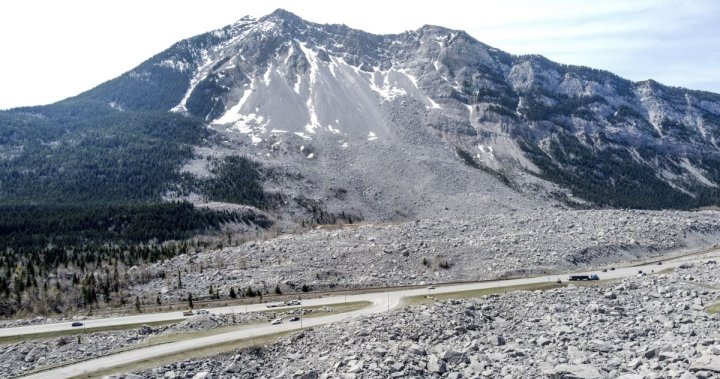Frozen rivers and lakes can be deceptive, especially during an unseasonably warm winter like this one.
That’s why first responders and environmental researchers are urging Canadians to exercise caution near waterways after a string of tragedies over the holidays.
In less than a week, at least five Canadians have died after falling into icy bodies of water. The latest victim is a teenager in Ottawa, whose body was pulled from the Rideau River.
Emergency crews rescued two other teens Wednesday night, while a fourth remains missing.
“Ice can be very unpredictable,” said Stephanie Bakalar, a spokesperson with the Lifesaving Society, an organization promoting water safety.
“People look at the ice and think ‘it looks frozen,’” said Bakalar. “They don’t realize all the complexities it takes to actually form solid, safe ice.”
That solid, safe ice is becoming less common because of higher-than-normal temperatures across the country.
“It’s very unusual because it’s national,” said Environment Canada senior climatologist Dave Phillips. “[The ice] is very thin and dangerous to be on and that is a situation that is the result of the fact that winter really hasn’t got going yet.”
Those dangers were highlighted in Lac Ste. Anne County, west of Edmonton. Police discovered the bodies of a couple and their eight-year-old child on Tuesday. Investigators believe their utility terrain vehicle, or “side-by-side,” went through the ice.
Meanwhile, a 61-year-old man west of Calgary died Christmas Day, after falling into the Bow River.
Get the latest National news.
Sent to your email, every day.
“Police believe that the victim was taking a photo of something and when he fell through the ice,” Alberta RCMP Const. Kelsey Davidge told Global News.
North of Quebec City, a four-year-old girl passed through a safety barrier and fell into a river last Friday, while she was out sledding with her mother. Provincial police are calling the search a recovery mission.
Why mild weather can be so dangerous
The Lifesaving Society says most people who drown never intended on going into the water.
“They’re often playing near the water, maybe a creek bank,” said Bakalar. “In this type of weather, those banks and river edges can be very slippery.”
Bakalar is warning Canadians to stay “well back” from rivers, creeks and streams this time of year.
“Any body of water that has moving water is never going to freeze solid and is never going to be safe to walk on,” she said.
Even if temperatures feel “balmy” outside, they’re potentially life-threatening in the water, warns Phillips.
“It may not have any ice in it, but it is as cold as it can get without the ice.”
What to look out for
The RCMP is warning Canadians to avoid going out on the ice during the nighttime or if they’re impaired.
Const. Davidge is also urging people to pay attention to the colour of the ice, which may be an “indication of its strength,” with clear blue to black being the deepest.
“You may know a place and go there every year and done the same routine. But as we are having those above-average temperatures, just be cautious,” she said.
If you are on the ice, whether walking or skating, the RCMP officer says it should be at least 15 centimeters thick, or 20 centimeters for a larger group. For off-road vehicles, like ATVs or four-wheelers, Const. Davidge recommends at least 25 centimeters.
Why it’s important to wait
Phillips, a senior climatologist, worries the “delayed” start to winter can lead some people to take unnecessary risks.
“I always worry about this season,” said Phillips. “Snowmobilers and ice fishers may say, ‘I invested all this money in the equipment. I have to have a day or two days,’ so they head out and it’s not safe.”
As climate change warms the planet, he’s asking Canadians to be patient.
“There just haven’t been enough cold days to freeze that ice into something that could stand the body weight of any other human being,” said Phillips.
— with files from Global News’ David Baxter
© 2023 Global News, a division of Corus Entertainment Inc.




